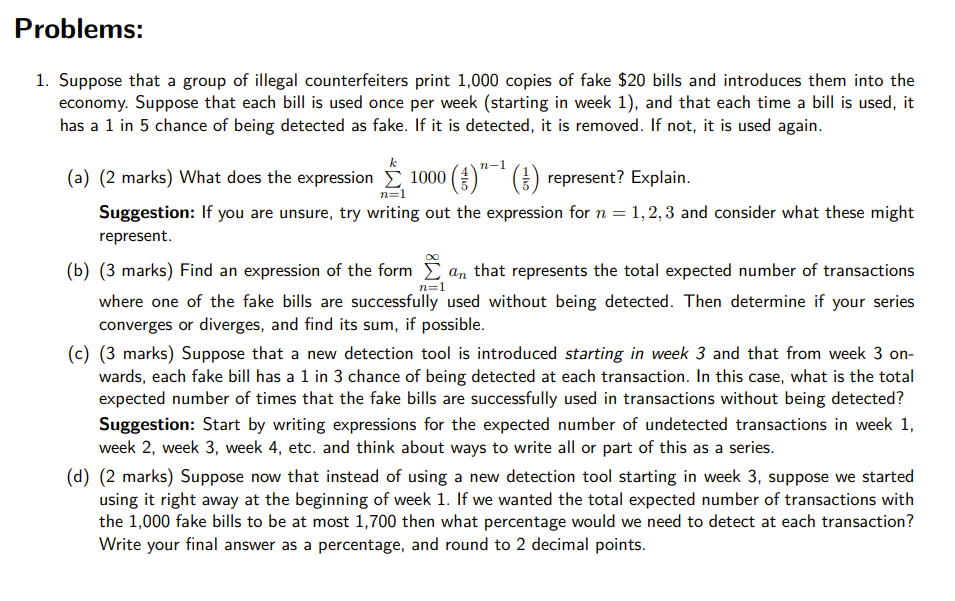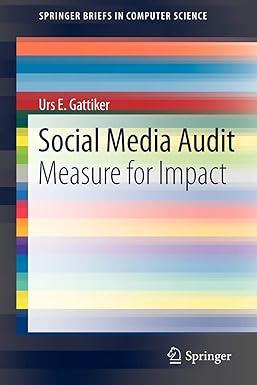I will automatically dislike if you copy the other answers

Problems: 1. Suppose that a group of illegal counterfeiters print 1,000 copies of fake $20 bills and introduces them into the economy. Suppose that each bill is used once per week (starting in week 1), and that each time a bill is used, it has a 1 in 5 chance of being detected as fake. If it is detected, it is removed. If not, it is used again. n=1 (a) (2 marks) What does the expression 1000 ()" (1) represent? Explain. n=1 Suggestion: If you are unsure, try writing out the expression for n=1,2,3 and consider what these might represent (b) (3 marks) Find an expression of the form an that represents the total expected number of transactions where one of the fake bills are successfully used without being detected. Then determine if your series converges or diverges, and find its sum, if possible. (c) (3 marks) Suppose that a new detection tool is introduced starting in week 3 and that from week 3 on- wards, each fake bill has a 1 in 3 chance of being detected at each transaction. In this case, what is the total expected number of times that the fake bills are successfully used in transactions without being detected? Suggestion: Start by writing expressions for the expected number of undetected transactions in week 1, week 2, week 3, week 4, etc. and think about ways to write all or part of this as a series. (d) (2 marks) Suppose now that instead of using a new detection tool starting in week 3, suppose we started using it right away at the beginning of week 1. If we wanted the total expected number of transactions with the 1,000 fake bills to be at most 1,700 then what percentage would we need to detect at each transaction? Write your final answer as a percentage, and round to 2 decimal points. Problems: 1. Suppose that a group of illegal counterfeiters print 1,000 copies of fake $20 bills and introduces them into the economy. Suppose that each bill is used once per week (starting in week 1), and that each time a bill is used, it has a 1 in 5 chance of being detected as fake. If it is detected, it is removed. If not, it is used again. n=1 (a) (2 marks) What does the expression 1000 ()" (1) represent? Explain. n=1 Suggestion: If you are unsure, try writing out the expression for n=1,2,3 and consider what these might represent (b) (3 marks) Find an expression of the form an that represents the total expected number of transactions where one of the fake bills are successfully used without being detected. Then determine if your series converges or diverges, and find its sum, if possible. (c) (3 marks) Suppose that a new detection tool is introduced starting in week 3 and that from week 3 on- wards, each fake bill has a 1 in 3 chance of being detected at each transaction. In this case, what is the total expected number of times that the fake bills are successfully used in transactions without being detected? Suggestion: Start by writing expressions for the expected number of undetected transactions in week 1, week 2, week 3, week 4, etc. and think about ways to write all or part of this as a series. (d) (2 marks) Suppose now that instead of using a new detection tool starting in week 3, suppose we started using it right away at the beginning of week 1. If we wanted the total expected number of transactions with the 1,000 fake bills to be at most 1,700 then what percentage would we need to detect at each transaction? Write your final answer as a percentage, and round to 2 decimal points







